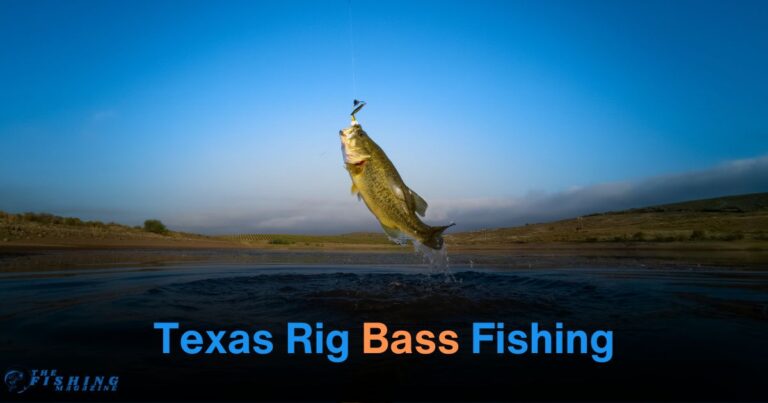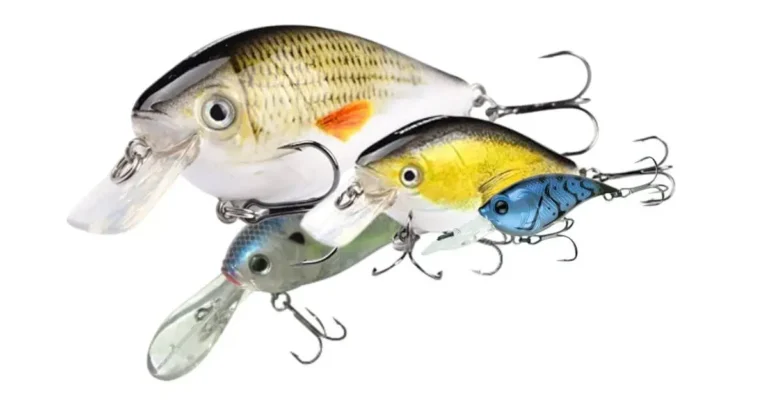Mackerel fishing is a favorite pastime for many anglers, offering excitement, a challenge, and a tasty reward. Whether you’re fishing from the shore or out at sea, catching mackerel can be a thrilling experience. This guide will take you through everything you need to know about mackerel fishing, from the best techniques and fishing gear to expert fishing tips, seasonal strategies, and answers to the most frequently asked questions.
Introduction: Why Mackerel Fishing Should Be on Your Bucket List
Mackerel fishing isn’t just about catching fish—it’s about the experience, the thrill of the chase, and the joy of being out on the water. These fast-swimming, hard-fighting fish are a challenge to catch, making them a favorite among both novice and experienced anglers.
Mackerel are abundant in many coastal areas, particularly in the summer months when they migrate closer to shore. They’re known for their striking appearance, with shimmering, iridescent scales and a sleek, streamlined body built for speed. Not only are they fun to catch, but mackerel also make for excellent table fare, with their firm, flavorful flesh perfect for grilling, smoking, or making into pâté.
In this comprehensive guide, we’ll explore everything you need to know to get started with mackerel fishing, from choosing the right gear and bait to the best times and locations to fish. Whether you’re a beginner or a seasoned angler, there’s always something new to learn about this exciting sport.
1. Understanding Mackerel: Species, Habits, and Habitat
Before you head out to catch mackerel, it’s helpful to know a little bit about the fish you’re targeting. Understanding their habits and habitat will increase your chances of success.
Species of Mackerel
There are several species of mackerel found around the world, but the most common types that anglers target include:
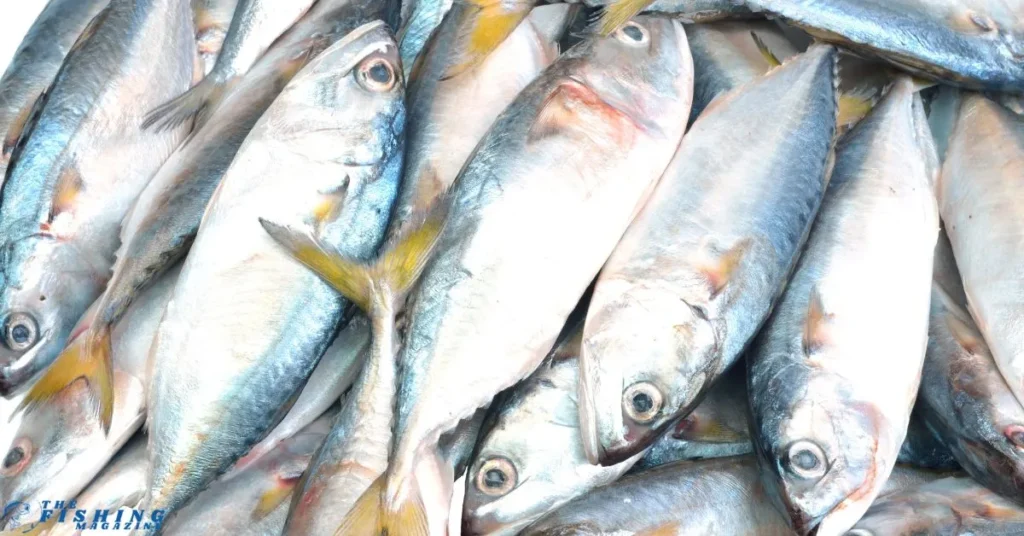
- Atlantic Mackerel (Scomber scombrus): Found in the North Atlantic, this species is popular in Europe and North America. They’re known for their rapid schooling behavior and are often caught in large numbers.
- Spanish Mackerel (Scomberomorus maculatus): Common in the Gulf of Mexico and the Atlantic coast of the southeastern United States, Spanish mackerel are slightly larger and have distinctive spots along their sides.
- King Mackerel (Scomberomorus cavalla): Also known as kingfish, this species is larger than its Atlantic and Spanish cousins, and is prized by sport fishermen for its size and strength.
- Pacific Mackerel (Scomber japonicus): Found in the Pacific Ocean, particularly along the coasts of California and Mexico, this species is similar in size and behavior to the Atlantic mackerel.
Mackerel Habitat
Mackerel are typically found in schools, often near the surface of the water. They prefer cooler, nutrient-rich waters, and are commonly found near the coast during their spawning season. Mackerel tend to migrate, following their food sources, which consist primarily of small fish, crustaceans, and plankton.
During the summer months, mackerel often come closer to shore, making them more accessible to anglers fishing from piers, beaches, and boats. They’re known to frequent areas with strong currents, such as tidal rips and around underwater structures like reefs and shipwrecks.
Mackerel Behavior and Feeding Habits
Mackerel are voracious feeders and will often strike at anything that resembles their prey. They’re fast swimmers and can cover large areas of water quickly, making them a challenging target for anglers. Mackerel are most active during the early morning and late afternoon, though they can be caught throughout the day, especially when the tide is moving.
Understanding these behaviors will help you know where and when to fish for mackerel, increasing your chances of a successful catch.
2. The Best Times and Locations for Mackerel Fishing
When it comes to mackerel fishing, timing and location are everything. Knowing when and where to fish can make the difference between a successful day on the water and coming home empty-handed.

Best Time of Year to Catch Mackerel
Mackerel are typically most abundant during the warmer months, from late spring through early fall. This is when they migrate closer to shore to feed and spawn. However, the exact timing can vary depending on your location.
- Spring: In the spring, mackerel begin to move inshore as the water temperature rises. This is a great time to start targeting them, especially in southern regions.
- Summer: Summer is peak mackerel season in most areas. The fish are highly active and can be found in large schools near the surface.
- Fall: As the water starts to cool, mackerel begin to move back offshore. This can still be a productive time to fish, particularly in warmer regions where they linger longer.
Best Time of Day to Fish for Mackerel
Mackerel are most active during the early morning and late afternoon, when the water is cooler and they’re more likely to be feeding near the surface. However, they can be caught at any time of day, particularly during a strong tidal movement.
- Early Morning: The hours just after sunrise are often the best time to catch mackerel, as they’re actively feeding in the cool, shallow waters.
- Late Afternoon: The period leading up to sunset can also be very productive, as mackerel move inshore to feed before nightfall.
Top Locations for Mackerel Fishing
Mackerel can be found in many coastal areas around the world, but some locations are particularly well-known for mackerel fishing. Here are a few of the best spots:
- Northeastern United States: The coast of New England is a prime location for Atlantic mackerel fishing, particularly during the summer months.
- Southeastern United States: Florida and the Gulf of Mexico are known for their Spanish and king mackerel fisheries.
- United Kingdom: The waters around the UK, particularly the English Channel and the North Sea, are famous for their abundant mackerel populations.
- Australia: The coastal waters of Australia are home to several species of mackerel, including the Spanish mackerel, which is a popular target for sport fishermen.
3. Essential Gear for Mackerel Fishing
Having the right gear is essential for a successful mackerel fishing trip. While mackerel are not particularly large or difficult to catch, they are fast and can be quite aggressive, so it’s important to have equipment that can handle their speed and strength.
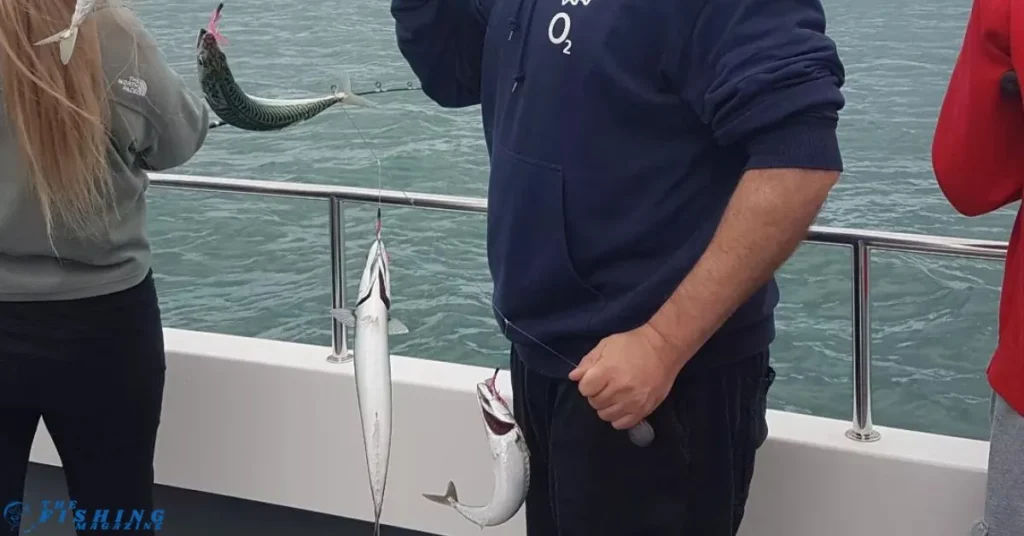
Rods and Reels
- Rod: A medium-light to medium-action spinning rod is ideal for mackerel fishing. A rod between 7 and 9 feet in length will give you the casting distance and sensitivity needed to feel the bite.
- Reel: A spinning reel with a smooth drag system is important for mackerel fishing. A reel that can hold between 150 and 200 yards of 10- to 15-pound test line is typically sufficient.
Line and Leader
- Line: A monofilament or braided line in the 10- to 15-pound test range is ideal for mackerel fishing. Braided line offers greater sensitivity and strength, which can be helpful when fishing for larger species like king mackerel.
- Leader: Mackerel have sharp teeth, so it’s important to use a fluorocarbon or wire leader to prevent them from cutting through the line. A 20- to 30-pound test leader is usually sufficient.
Hooks and Rigs
- Hooks: Small, sharp hooks in the size 2 to 1/0 range are ideal for mackerel fishing. Circle hooks are a good choice because they tend to hook the fish in the corner of the mouth, making for easier release.
- Rigs: There are several effective rigs for mackerel fishing, including:
- Sabiki Rig: This rig is a popular choice for catching mackerel in large numbers. It consists of a series of small hooks with colorful beads or feathers, which mimic the appearance of small baitfish.
- Float Rig: A float rig allows you to suspend your bait at a specific depth, which can be useful when fishing in deeper water or when the mackerel are feeding near the surface.
- Bottom Rig: A simple bottom rig with a sinker and a single hook can be effective when fishing for mackerel near the bottom.
Bait and Lures
- Live Bait: Live bait is often the most effective option for mackerel fishing. Small fish such as sardines, herring, and anchovies are all good choices.
- Artificial Lures: Mackerel are aggressive feeders and will often strike at shiny, fast-moving lures. Popular choices include:
- Metal Jigs: These lures mimic the appearance of small baitfish and are effective when jigged vertically or cast and retrieved quickly.
- Spoons: Spoons are another effective option, particularly when mackerel are feeding near the surface.
- Soft Plastics: Soft plastic lures can be effective when fished on a jig head or a weighted hook.
4. Techniques for Catching Mackerel
Mackerel are fast swimmers and can be caught using a variety of techniques. Whether you’re fishing from a boat, the shore, or a pier, these techniques will help you land more fish.
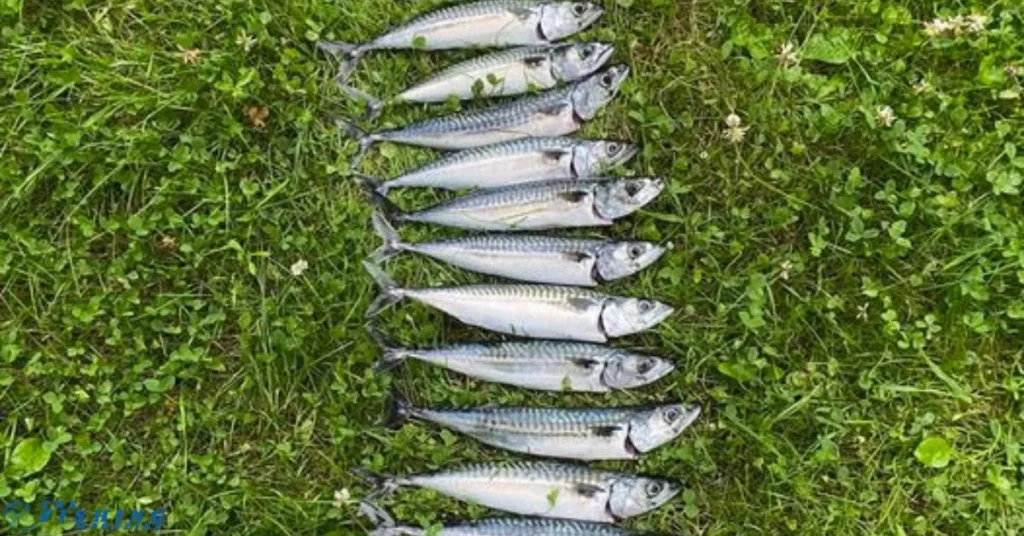
Boat Fishing for Mackerel
Fishing for mackerel from a boat offers several advantages, including the ability to cover more water and reach deeper areas where mackerel often school. Here are some effective techniques for boat fishing:
- Trolling: Trolling is a popular technique for catching mackerel, particularly larger species like Spanish and king mackerel. Use a medium-speed troll with artificial lures such as spoons or live bait rigged on a wire leader.
- Chumming: Chumming involves scattering small pieces of bait in the water to attract mackerel to your location. Once the mackerel are attracted to the chum, you can cast your bait or lures into the feeding frenzy.
- Vertical Jigging: When mackerel are schooling in deeper water, vertical jigging with metal jigs can be highly effective. Drop the jig to the desired depth and then quickly retrieve it with a jerking motion to mimic a fleeing baitfish.
Shore and Pier Fishing for Mackerel
Fishing for mackerel from the shore or a pier is a great option if you don’t have access to a boat. Here are some techniques that work well:
- Casting and Retrieving: Casting small lures or live bait from the shore or pier and retrieving them quickly is a simple and effective way to catch mackerel. Focus on areas with strong currents or around structures where mackerel are likely to be hunting for food.
- Float Fishing: Using a float rig allows you to suspend your bait at the desired depth, which can be useful when mackerel are feeding near the surface. Adjust the depth of your bait depending on where the fish are biting.
- Sabiki Rigging: If you’re fishing from a pier or jetty, a Sabiki rig can be an effective way to catch multiple mackerel at once. Drop the rig into the water and jig it up and down to attract mackerel to the small hooks.
5. Tips for Success: Maximizing Your Mackerel Catch
Catching mackerel can be both exciting and rewarding, but it also requires some skill and knowledge. Here are some tips to help you maximize your mackerel catch:
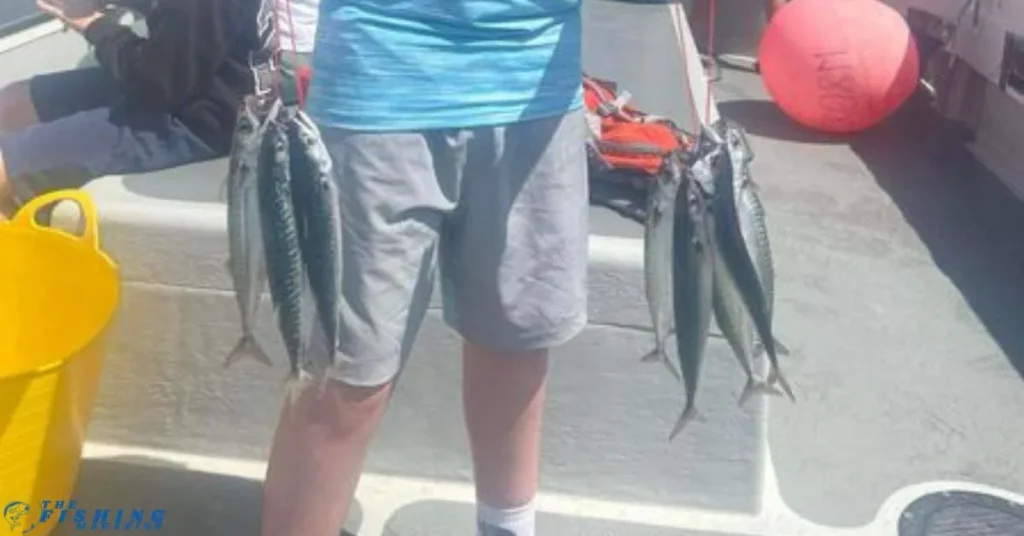
Follow the Birds
One of the best indicators of mackerel activity is the presence of seabirds. Birds such as gulls and terns often feed on the same baitfish that mackerel are hunting, so if you see a flock of birds diving into the water, there’s a good chance that mackerel are nearby.
Use a Variety of Lures
Mackerel can be finicky at times, so it’s a good idea to have a variety of lures on hand. If the fish aren’t biting on one type of lure, try switching to something different, such as a different color or size. Sometimes a small change can make a big difference.
Pay Attention to the Tides
Tides can have a significant impact on mackerel fishing. Mackerel are often more active during the changing tides, particularly during the incoming tide when baitfish are being pushed closer to shore. Plan your fishing trips around the tide changes for the best results.
Keep Your Hooks Sharp
Mackerel have tough mouths, so it’s important to keep your hooks sharp. Dull hooks are more likely to slip out of the fish’s mouth, resulting in lost fish. Check your hooks regularly and sharpen them if necessary.
6. FAQs About Mackerel Fishing
Q1: What is the best bait for mackerel fishing?
A1: The best bait for mackerel fishing is typically small, oily fish such as sardines, herring, or anchovies. Mackerel are attracted to the smell and movement of live bait, but they will also strike at artificial lures that mimic these baitfish.
Q2: What is the best time of year to catch mackerel?
A2: The best time of year to catch mackerel is during the warmer months, from late spring through early fall. This is when mackerel are most abundant and active, particularly near the coast.
Q3: Do I need a fishing license to catch mackerel?
A3: Yes, in most areas, you will need a fishing license to catch mackerel. The requirements vary depending on your location, so be sure to check local regulations before you go fishing.
Q4: Can you eat mackerel raw?
A4: Yes, mackerel can be eaten raw and is often used in sushi and sashimi. However, it’s important to ensure that the fish is fresh and properly handled to avoid the risk of foodborne illness.
Q5: What is the best way to cook mackerel?
A5: Mackerel is a versatile fish that can be cooked in many ways, including grilling, baking, smoking, and frying. Its rich, oily flesh makes it particularly well-suited to grilling, as the oil helps keep the fish moist and flavorful.
Fishing Charters for Mackerel
If you want to maximize your chances of landing big catches, booking a fishing charter for mackerel is an excellent choice. Charters offer a hassle-free experience, providing expert guides, top-quality gear, and access to the best fishing spots.
Benefits of a Mackerel Fishing Charter
- Expert Guidance: Professional captains and crew know exactly where to find mackerel hotspots and the best techniques to use.
- Top-Notch Equipment: Most charters supply high-quality rods, reels, bait, and tackle designed specifically for catching mackerel.
- Access to Prime Locations: Charters take you to offshore reefs, tidal rips, and deep-water structures where large schools of mackerel gather.
- Convenience & Comfort: Enjoy a stress-free trip with everything provided, including safety gear and sometimes even food and beverages.
Best Locations for Mackerel Fishing Charters
- United States:
- Florida (Spanish & King Mackerel)
- Massachusetts (Atlantic Mackerel)
- Gulf of Mexico (Spanish & King Mackerel)
- United Kingdom:
- Cornwall
- Devon
- Scotland’s West Coast
- Australia:
- Queensland (Spanish Mackerel)
- New South Wales
- Western Australia
What to Expect on a Mackerel Charter
- Trip Duration: Typically half-day (4–5 hours) or full-day (8+ hours) trips.
- Fishing Techniques Used: Trolling, jigging, and chumming are common on charter trips.
- Catch & Keep: Many charters allow you to keep your catch, and some even offer cleaning and filleting services.
- Pricing: Prices vary by location, but expect to pay $80–$200 per person or $500–$1,500 for private charters.
Fishing charters for mackerel are perfect for beginners and seasoned anglers alike, ensuring an action-packed day on the water with high catch rates and an unforgettable experience.
Conclusion: Get Hooked on Mackerel Fishing
Mackerel fishing is an exciting and rewarding activity that offers something for everyone, whether you’re a beginner or an experienced angler. With their fast-paced action, beautiful appearance, and delicious flavor, mackerel are a joy to catch and even better to eat.
By understanding the habits and habitat of mackerel, choosing the right gear, and using the right techniques, you can increase your chances of a successful catch. So grab your rod and reel, head to your nearest coastal spot, and experience the thrill of mackerel fishing for yourself. Happy fishing.



